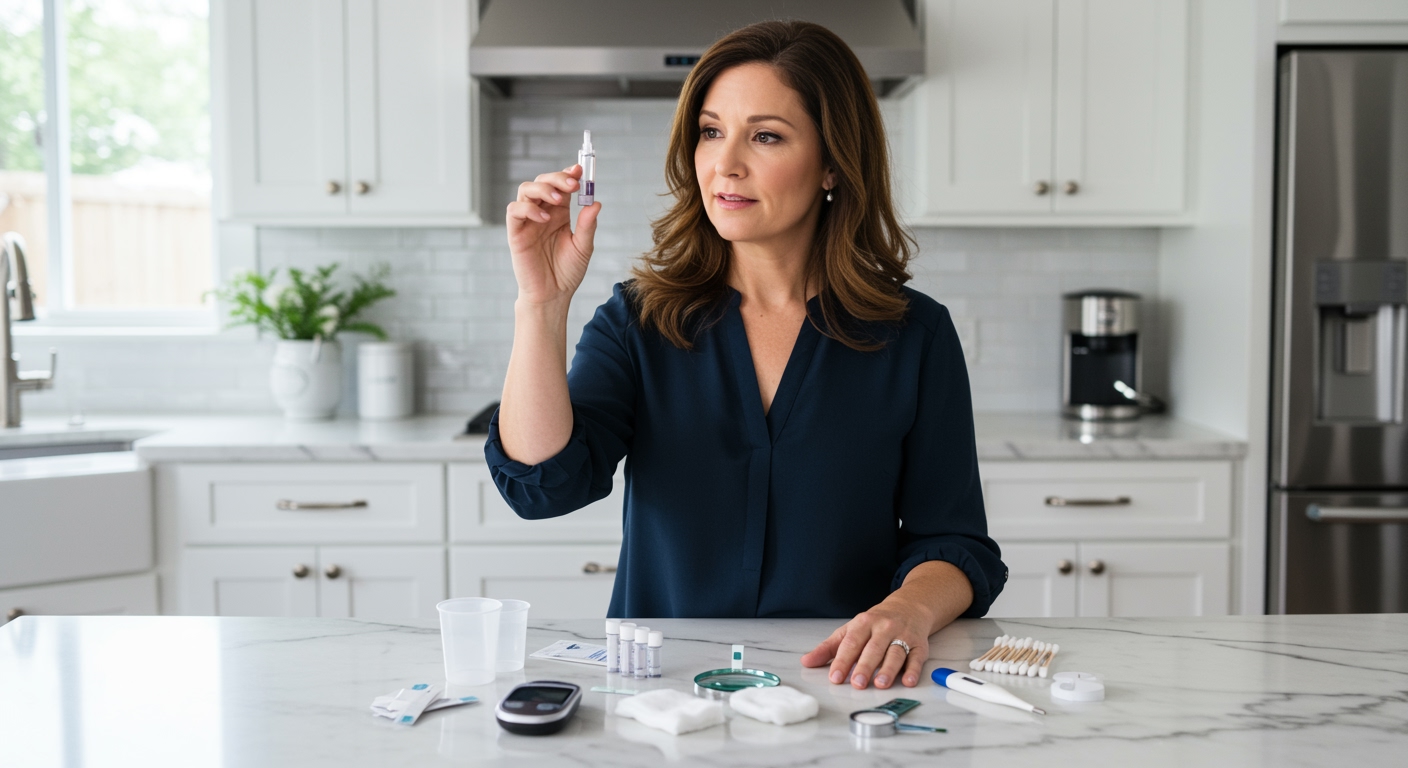✪ Key Highlight: New research shows saliva and tear tests could replace painful blood draws for monitoring diabetes and vitamin D levels.
Introduction
Imagine checking your blood sugar levels without a single needle prick.
Scientists published groundbreaking research in the journal Physiologia showing that saliva and tears might replace blood tests for monitoring vitamin D and glucose levels in people with type 2 diabetes.
Hi, I’m Abdur, your nutrition coach and today I’m going to analyze this revolutionary study that could transform how millions of people monitor their chronic health conditions.
How Do Saliva Tests Actually Work?
Your saliva contains the same biomarkers found in your blood, just in different concentrations.
The research team discovered that glucose levels in tears closely match blood glucose readings.
Meanwhile, vitamin D levels in saliva accurately reflect your body’s overall vitamin D status.
Scientists also found a special marker called 1,5-anhydroglucitol in saliva that correlates strongly with blood glucose and HbA1c levels.
This marker becomes particularly useful because it can detect glucose fluctuations over several days, not just at the moment of testing.
The challenge lies in the fact that these biomarker concentrations are much lower in saliva and tears than in blood.
Therefore, researchers need highly sensitive testing equipment to detect these tiny amounts accurately.
✪ Fact: Your saliva contains over 3,000 different proteins that can reveal information about your health status.
Why Does This Matter For Diabetes Management?
People with diabetes need to check their blood sugar multiple times daily, often requiring painful finger pricks.
This constant needle use causes discomfort, anxiety, and sometimes leads to poor compliance with monitoring routines.
Research from the University of British Columbia Okanagan shows that insulin levels in saliva can predict type 2 diabetes risk before blood glucose levels even start rising.
Dr. Jonathan Little explains that detecting hyperinsulinemia early through saliva tests could identify at-risk people years before traditional blood tests.
This early detection allows for lifestyle interventions and treatments to prevent or delay the onset of type 2 diabetes.
The non-invasive nature of saliva testing could dramatically improve patient compliance with regular monitoring.
Studies suggest that combining salivary markers with traditional tests could reduce the need for more invasive procedures like the oral glucose tolerance test.
✪ Pro Tip: Keep a consistent saliva collection routine if these tests become available, as hydration and meal timing can affect results.
What About Vitamin D Testing Through Saliva?
Vitamin D deficiency affects nearly one billion people worldwide, yet many avoid testing due to needle phobia.
This fat-soluble vitamin plays crucial roles in calcium absorption, bone health, immune function, and inflammation control.
Low vitamin D levels link to heart disease, autoimmune disorders, diabetes, metabolic syndrome, and increased infection risk.
The new research suggests that salivary vitamin D measurements could accurately reflect your body’s vitamin D status.
This breakthrough could make vitamin D monitoring accessible to people who currently avoid blood tests due to fear or inconvenience.
Regular monitoring becomes especially important for people with limited sun exposure, darker skin tones, or those living in northern climates.
Healthcare providers could use saliva tests to track supplementation effectiveness without requiring multiple blood draws over time.
✪ Note: Vitamin D testing through saliva could be particularly beneficial for children and elderly patients who struggle with blood draws.
What Are The Current Limitations?
The pilot study shows promise, but researchers acknowledge that more extensive validation studies are needed.
Current testing technology requires highly sensitive equipment that may not be readily available in all healthcare settings.
Scientists are working to develop affordable, portable devices that could make home testing possible in the future.
The concentration differences between blood and saliva mean that standardization protocols need careful development.
Factors like hydration status, recent food intake, and oral health could potentially affect saliva test accuracy.
Researchers must establish reference ranges for salivary biomarkers that correspond to blood test values.
The technology for tear collection and analysis needs further refinement before becoming practical for routine use.
✪ Pro Tip: Until saliva tests become mainstream, maintain regular blood testing schedules as recommended by your healthcare provider.
When Might These Tests Become Available?
Researchers are developing enzymatic-based assays that could be adapted for portable home testing devices.
The technology could potentially be integrated into smartphone apps or simple handheld devices for immediate results.
Scientists believe that with proper validation, these tests could become routine for managing chronic diseases like diabetes.
The shift to non-invasive testing could revolutionize healthcare for people requiring frequent monitoring.
Healthcare systems could benefit from reduced costs associated with blood collection, processing, and laboratory analysis.
The convenience factor could lead to better compliance with monitoring recommendations, ultimately improving health outcomes.
However, regulatory approval and clinical validation processes may take several years before widespread implementation.
✪ Fact: Home glucose monitoring revolutionized diabetes care in the 1980s, and saliva testing could represent the next major breakthrough.
The Bottom Line
This research represents a significant step toward making health monitoring more accessible and comfortable for millions of people worldwide.
The future of healthcare lies in making essential monitoring as simple and painless as possible, and saliva testing could be the key to achieving this goal.
I would love to hear your thoughts about this breakthrough – would you prefer saliva tests over blood draws for monitoring your health, and what concerns might you have about this new technology?
References
At NutritionCrown, we use quality and credible sources to ensure our content is accurate and trustworthy. Below are the sources referenced in creating this article:
- News Medical: Can saliva and tears replace blood tests for vitamin D and glucose
- Pharmacy Times: Non-invasive saliva tests could offer early clues for diabetes and obesity risk
- PMC: Salivary Biomarkers for Diagnosis of Type 2 Diabetes and Pre-diabetes
- Greater Good: Could tears and saliva replace blood tests
- News Medical: Could vitamin D be the missing link in managing type 2 diabetes





